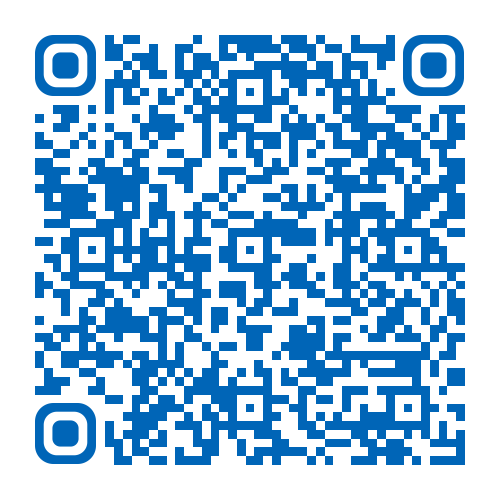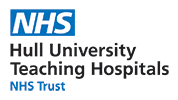- Reference Number: HEY-691/2024
- Departments: Radiology
- Last Updated: 1 February 2024
Introduction
This leaflet has been produced to give you general information about what a CT Colonoscopy involves. It is not intended to replace the discussion between you and the healthcare team, but may act as a starting point for discussion. You will receive a phone call from one of the CT team regarding an appointment date and time and also how you need to prepare for the test.
What is CT colonoscopy?
CT Colonoscopy is a procedure that uses a CT scanner to produce detailed images of the colon and rectum. CT Colonoscopy differs from a routine CT of the abdomen as the large bowel is inflated with carbon dioxide during the CT, enabling us to get detailed views of the lining of the bowel.
A CT scanner uses x-rays to obtain very detailed pictures of the body. The scanner is shaped like a large ‘donut’. The hole is almost 90 cms wide and only about 30 cms deep. You will lie on a movable table and pass through the scanner whilst the x-ray images are being taken. The x-rays pass through the body and are detected by sensors on the other side of the machine. This information then passes to a computer, which produces an image of the structures inside your body.
What is CT colonoscopy used for?
The main reason for referral for CT colonoscopy is to look for polyps or cancers in the colon or rectum. Polyps are small growths on the inside of your bowel. They are usually harmless but some polyps can develop into cancer.
CT colonoscopy can be used if you have symptoms such as changes in your bowel habit, weight loss or blood in your faeces (stools). It can also be used to screen people who are at risk of developing bowel cancer.
What are the benefits of CT colonoscopy?
CT examinations are fast and simple. A CTC can be used instead of colonoscopy to look at the inside of your bowel. CTC is a less invasive test and is safer than colonoscopy. Patients also report they prefer CTC to colonoscopy as it is less uncomfortable.
Unlike other investigations, CT scanning offers detailed views of many types of tissue, including the bones, soft tissues and blood vessels. This allows us to sometimes pick up important abnormalities elsewhere, so they can be treated before they make you unwell.
How do I prepare for the CT colonoscopy?
You will receive detailed instructions on how to prepare for the test. One of the CT team will call you with all the information you will require for the test, which will also be posted to you.
A special diet is very important before the test along with the bowel preparation. It is important to follow this diet properly as too much faeces in your bowel can make it difficult for the Radiographer and doctor to interpret the scan.
You will need to start the preparation the day before your appointment
What happens during a colonoscopy?
When you attend the CT department, the Radiographer or Clinical Imaging Support Worker will explain the procedure and ask you to change into a hospital gown. You may bring your own dressing gown and slippers if desired.
The Radiographer or Clinical Imaging Support Worker will put a small cannula (needle) into a vein in the back of your hand or at the crease of you elbow, as during the CT scan you may be given an injection of a muscle relaxant to help relax the muscles of your bowel wall and contrast agent to demonstrate your bowel on the CT images.
In the CT scan room, you will be asked to lie on your side on the CT table. A very small flexible tube will be passed a small way into your back passage to allow gas (carbon dioxide) to be gently pumped into the colon. The gas is pumped in by an electronic pump and helps to widen the colon as much as possible smoothing the number of folds in the bowel that may hide polyps or growths. During this process, you may briefly feel aches and pains similar to trapped wind. You may also have an urge to go to the toilet. As your colon is empty, this will not happen.
During the CT scan, the Radiographer will leave the room but you will be observed closely throughout your scan. The table will move through the scanner and you may be asked to hold your breath for about 15 seconds. As you move through the scanner, the x-ray images will be taken. The Radiographer will ask you to turn over onto your tummy or side and the scan will be repeated.
The CT scan is painless and you cannot see or feel the x-rays. At the end of the scan you will remain on the CT table for a few minutes whilst the Radiographer checks the images that have been produced. Further scans may be required.
Once the scans have been completed, the cannula will be removed from your arm. You will then be escorted to a changing room where you will be able to get dressed.
The complete examination will take between 30 to 40 minutes in total. Sometimes your appointment may be delayed if an emergency case arrives. Please be patient if this should happen.
Who will do the examination?
An experienced Radiographer will perform this examination.
What happens afterwards?
You will be asked to drink plenty of fluids following the examination. If you had a muscle relaxant injection, you may have blurred vision for 30 minutes after the injection and you will be asked to remain in the department until this side effect has worn off. If you have a contrast agent injection, the staff will ask you to remain in the department for about 30 minutes to make sure that any possible effects have worn off.
You should eat and drink as normal after the scan.
Before you leave the department, you will be provided with a hot or cold drink. You are welcome to bring something to eat.
The scans will be reported within a few days of your examination. Once reported your scan results will be sent to your consultant. You will then receive an outpatient appointment though the post advising you of when your consultant wants to see you to discuss your results. We never give out results on the day.
What are the possible risks?
Regular side effects
There are several side effects that Radiographers regularly see, these include:
- Muscle relaxants can make the mouth dry and vision blurred. This is expected to last 30 minutes. Please do not drive until your vision has returned to normal.
- Contrast agents are likely to feel very warm as the injection is given and may feel as though you have passed urine although you will not have done so. You may also have a strange taste in your mouth. All of these effects will disappear quickly.
- The gas that is used to inflate your bowel may make you feel a little bloated during and after the examination. This will soon wear off after you have been to the toilet.
- A haematoma (bruise) can occur at the injection site.
Rare complications
There are some more serious complications that are rarely seen but which the Radiographers and doctors are well prepared for:
- Cardio-vascular complications such as feeling faint following injections of the muscle relaxant.
- Allergic reaction and renal complications as a result of the contrast agents or bowel cleansing medicines.
- Severe abdominal pain. Perforation of the bowel. There is a very small chance (1 in 3,000) that your colon may be damaged during the procedure. This can lead to bleeding and infection, which may need treatment with medicines or surgery.
- The injection of the muscle relaxant may cause a painful red eye in people at risk of glaucoma.
The radiography staff will check that you have none of these symptoms before sending you home. If you are concerned about any of these symptoms after returning home, please contact the CT department or your GP.
Radiation dose
Unborn babies are more susceptible to radiation than adults, so please tell the Radiographer before the examination if there is any possibility that you are pregnant.
CT scanning uses x-rays to produce the images. Patients are often worried about being exposed to radiation. However, it is important to get the risks into perspective. The risk to your health from not having the required examination is likely to be much greater than any risk from the radiation itself.
If you have any other questions please do not hesitate to telephone the CT department on 01482622043 for all CHH appointments.
General Advice and Consent
Most of your questions should have been answered by this leaflet, but remember that this is only a starting point for discussion with the healthcare team.
Consent to treatment
Before any doctor, nurse or therapist examines or treats you, they must seek your consent or permission. In order to make a decision, you need to have information from health professionals about the treatment or investigation which is being offered to you. You should always ask them more questions if you do not understand or if you want more information.
The information you receive should be about your condition, the alternatives available to you, and whether it carries risks as well as the benefits. What is important is that your consent is genuine or valid. That means:
- you must be able to give your consent
- you must be given enough information to enable you to make a decision
- you must be acting under your own free will and not under the strong influence of another person
During the course of your procedure the radiology staff will ask questions that may appear unnecessary to you and these may be repeated at certain intervals. Please be assured that these questions are necessary to ensure that all aspects of your care during the procedure are maintained to a high standard.
Information about you
We collect and use your information to provide you with care and treatment. As part of your care, information about you will be shared between members of a healthcare team, some of whom you may not meet. Your information may also be used to help train staff, to check the quality of our care, to manage and plan the health service, and to help with research. Wherever possible we use anonymous data.
We may pass on relevant information to other health organisations that provide you with care. All information is treated as strictly confidential and is not given to anyone who does not need it. If you have any concerns please ask your doctor, or the person caring for you.
Under the General Data Protection Regulation and the Data Protection Act 2018 we are responsible for maintaining the confidentiality of any information we hold about you. For further information visit the following page: Confidential Information about You.
If you or your carer needs information about your health and wellbeing and about your care and treatment in a different format, such as large print, braille or audio, due to disability, impairment or sensory loss, please advise a member of staff and this can be arranged.

